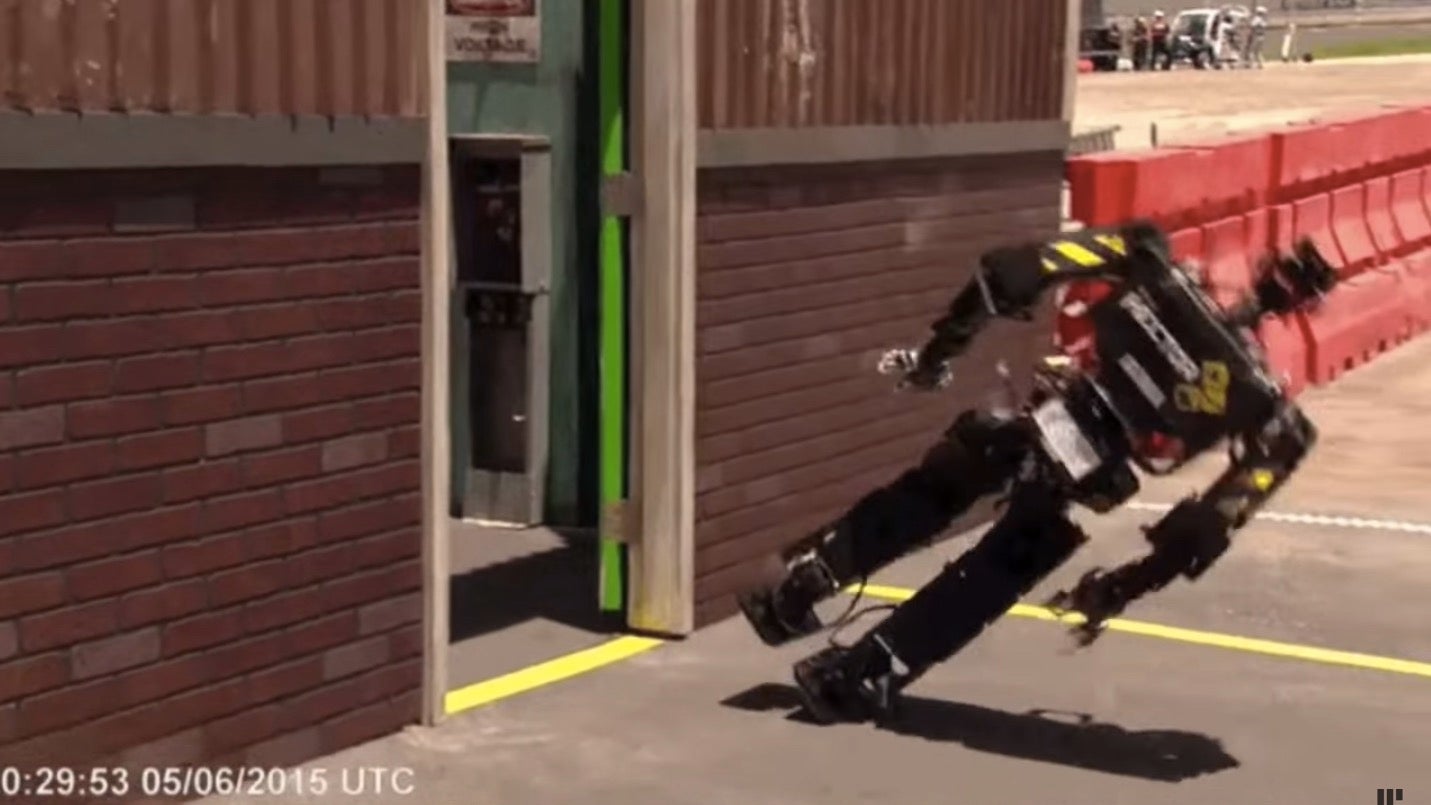Progress: Robots no longer have to fall over like drunk humans
Robots seem to be getting more advanced every day. They can run on their own in the forest, find their way around your house as they clean it, and even build IKEA furniture (sort of). But one thing they’re still terrible at is staying upright.


Robots seem to be getting more advanced every day. They can run on their own in the forest, find their way around your house as they clean it, and even build IKEA furniture (sort of). But one thing they’re still terrible at is staying upright.
They fall down stairs:
They roll off their feet:
And at this summer’s DARPA Robotics Challenge, the humanoid-shaped bots—designed to be able to aid people in disaster environments—kept falling over in the most comical ways:
And when they fell, they fell hard—like a human who’s had a long session at the pub and just can’t manage to brace his fall. Google’s Atlas robot—which many of the competitors used—weighs 330 pounds, and can get expensively damaged when it falls over.
But new research out of Georgia Tech might help tomorrow’s robots at least fall a little more gracefully.
The researchers taught robots to brace for impact when they fall, much like humans do, quickly reacting to the external force knocking them off balance. This should help ensure they don’t damage themselves quite as dramatically when the inevitable happens. But the researchers’ new algorithm isn’t perfect—the robots can still end up cartwheeling over if they’re toppled with too much force.
The research, developed by Sehoon Ha and Karen Liu, was presented at the IEEE/RSJ International Conference on Intelligent Robots and Systems in Hamburg, Germany, earlier this month. Ha told Georgia Tech’s website that learning how to fall safely will be increasingly important as robots start appearing in more work and domestic settings.
It makes sense: Apart from the potentially enormous cost of repairing a fallen robot, who wants to risk several hundred pounds of robot falling on you, a colleague or family member?